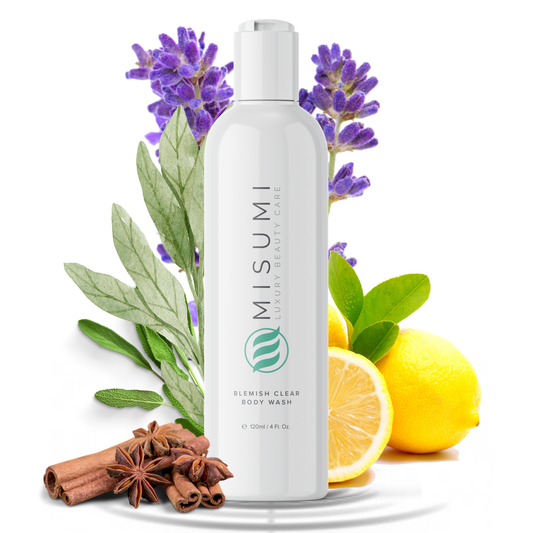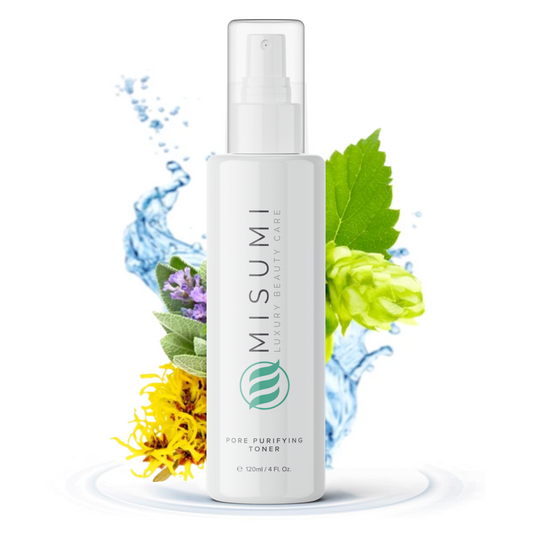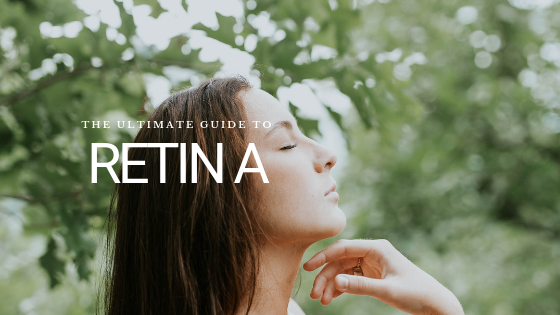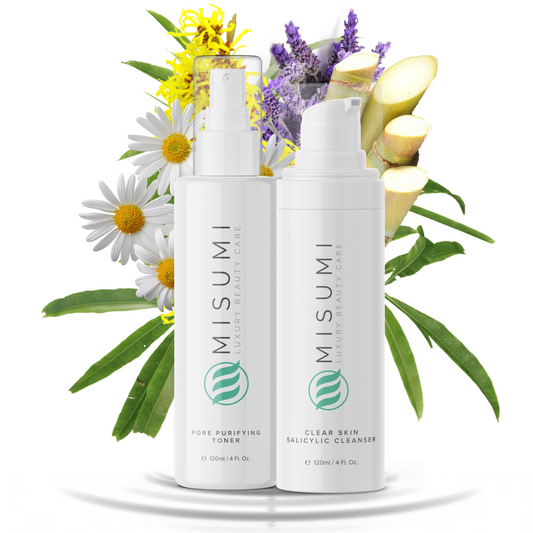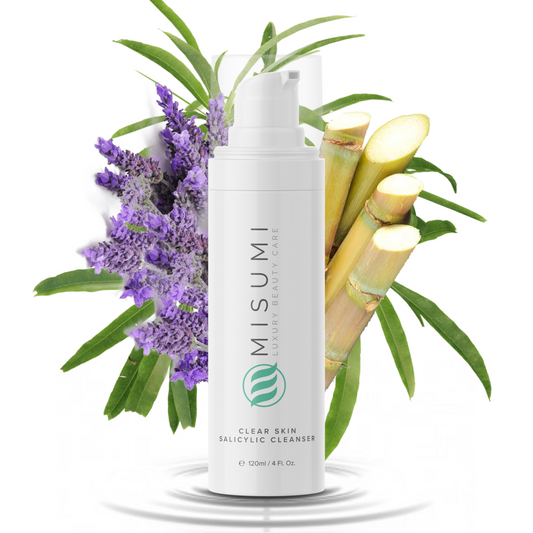You might be wondering what exactly Retin A is and why it’s blown up in recent years.
Vitamin A is a fat-soluble vitamin that’s also known as retinol. Retin A is a derivative from vitamin A and is a part of the topical retinoids group. Retinol, a form of Retin A, can also be used for treating similar skin conditions.
Retin A has been on the market for quite a while. Actually, it’s been used as an acne treatment since the 1960s. It’s available in many different forms such as creams and gels, and it also varies in strength.

Many people attribute their acne-free, glowing and youthful complexions to regular use of Retin A. It appears to have an endless list of benefits, ranging from skin rejuvenation to treating more serious conditions. Let’s delve into how Retin A works and what its main benefits are.
How Does Retin A work?
Each skin cell contains a retinoid receptor which regulates the function of the skin. These cells lose their initial order as we age. Here’s when Retin A comes in hand. It actually has the potential of normalizing the way in which the cells function and restores the order.
Retin A is a comedolytic, meaning it prevents the clogging of pores. This is crucial for keeping your skin acne-free. When your pores are clean, it means that there’s no environment for the acne to form in the first place.
Retin A for Acne
As we’ve already mentioned, Retin A increases the speed of the cell turnover process, which means that newer layers of skin appear on the surface. As the body gets rid of dead skin cells, it decreases the chances of the hair follicles getting blocked from bacteria, oil, and other accumulated acne-causing ingredients.
Using Retin A regularly can be a miracle worker for acne, and it’s not just the myriad of testimonials from people that say so. Studies show that using Retin A can both treat and prevent acne.
What’s more, it works on every type of acne, from severe cystic acne to innocuous papules.
How to Use Retin A for Acne

Now that we’ve covered all the amazing benefits that come from using Retin A topically, let’s discuss how to use it in order to treat acne.
So, how is Retin A used topically for acne? Well, it can come in the form of a gel and cream. Since we’re talking about the topical use, you should put it directly on your face. Keep in mind that it can cause damage to the skin on your hands, so make sure that you use either a tissue to put it on or gloves.
You should use it at night and put it all over your face, avoiding the eyes, lips, and hairline, just before you go to bed and after you’ve done your regular skincare routine. Wash your face with a mild cleanser, preferably one that’s pH balanced.
Retin A Before and After Acne
There are many Retin A before and after acne testimonials on the web and in magazines. Everywhere you look, there seems to be a before and after picture of women’s acne condition improving upon only using Retin A. People claim that it’s the product that has changed and improved their skin to an unbelievable degree, which is why it’s not seldom called a miracle worker.
Acne can affect your quality of life, that’s for certain. It makes you avoid certain social events, like swimming pool parties and road trips. It destroys your confidence and self-image. It can hurt, both physically and mentally, since people aren’t very understanding when it comes to this condition and often suggest insensitive solutions such as “You should try washing your face”.
I know how that can feel since I’ve been there. After almost a decade of struggling with acne, I found an amazing dermatologist, one who didn’t only care about cash. He put me on Accutane, which is also a vitamin A derivative, and on topical Retin A cream. Initially, I started to break out and my acne got worse for a while. But I had complete trust in the process and unshakeable faith that my struggle will come to an end.

After a few weeks went by, I noticed an immediate improvement in the amount of acne I had, as well as in the appearance of leftover hyperpigmentation and acne scars. The relief I felt is indescribable. I followed my skincare regimen religiously, along with the advice I was given from my doctor. After I got off Accutane, I continued my Retin A topical treatment. It’s been exactly a year since then, and now I’m completely acne-free, except the occasional hormonal pimple. The Retin A cream has improved any premature signs of aging, which I can attribute to the harsh, inadequate treatments previously. My texture and complexion have never been better. If there’s one thing I can advise you, is that it gets better. Sometimes the solution is something you would least expect.
Retin A for Oily Skin
The question of whether Retin A works just as great for every skin type must’ve popped up in your mind while reading this article. The most common reason why people use Retin A is in order to banish acne. And we all know that acne thrives on oily skin, so it makes sense for Retin A to work both on acne and oily skin types, right?
Well, it seems that things are not so black and white. We discussed previously how Retin A unclogs pores and cleans them inside out. Apparently, these pores can also be full of sebum, which ends up on your surface, making your skin oily. So, your skin is not necessarily producing more oil, it’s simply bringing the oil that was already there to the surface.

While it works on clearing up your spots/acne, Retin A also stimulates the growth of new skin, making more oil in the process. In addition, it can also dry out your skin, which can signal to the body to produce more sebum than usual.
So, how can you prevent this from happening? Using adequate skincare products in addition to Retin A is crucial. You should avoid using harsh cleansers and moisturizers. Instead, apply a gentle, oil-free moisturizer every morning. At night, after you’ve applied your Retin A cream, you should follow up with the moisturizer about an hour after applying it. When it comes to makeup, it’s best to use oil-free, non-comedogenic foundations and powders and always remove your makeup before going to bed.
Keep in mind that getting rid of acne doesn’t include banishing all oil from the face. A certain amount of oil is crucial for healthy and dewy skin. drying out your face to the point where you start getting dry patches is never a good idea.
Retin A for Hyperpigmentation
People who suffer from hyperpigmentation are often prescribed products that contain Retin A. It’s very normal to have hyperpigmentation on your face, especially if you’ve had acne for a long time. However, it can be an annoying skin problem to deal with, and many of us are eager to have a clear complexion (and keep it).
Using Retin A for hyperpigmentation is extremely efficient and easy. It acts as a gentle peel for the epidermis, bringing out healthy skin layers from underneath, all the while strengthening the skin tissue. Moreover, it also activates and stimulates the production of collagen, which is crucial for healthy skin. in the long run, it prevents any hyperpigmentation from occurring since it unclogs the pores and gets rid of acne.
It’s safe to conclude that Retin A changes the quality of your skin dramatically, and yet it does it in such a subtle way that you won’t need any recovery time like you would with other harsher treatments.
The Anti-Aging Benefits of Using Retin A

Research shows that using Retin A on the skin for a couple of months significantly improves the appearance of wrinkles and fine lines. But it doesn’t stop there! Research also proved that Retin A doesn’t only work on existing wrinkles and fine lines, but it also works by preventing future signs of aging from occurring in the first place. Not only can it do that, but a regular implementation of Retin A in your skincare routine can also improve signs of photoaging.
If you’re looking into using Retin A for its anti-aging benefits, there are a few things you should keep in mind. Always use it overnight, since Retin A makes your skin quite sensitive to the sun and it can counteract its assistance in getting rid of wrinkles. Going out in the sun is unavoidable sometimes, so always use sunscreen that has at least SPF 30 if you plan on spending some time in the sun.
If you’re using other anti-aging creams or gels, then pairing them with Retin A might be too much. Instead, opt for the rest of your skincare routine to be as gentle as possible.
In addition, if you’ve had any recent facial treatments such as chemical peels or laser treatment, then it’s best to discuss using Retin A with your dermatologists. These treatments can be quite harsh, and using Retin A on top of that can be dangerous for the skin and its protective layers. Consult your doctor if you’re already using Retin A and wish to try out any of the treatments mentioned above.
Things to Keep in Mind Before Using Retin A
As with any other skincare product, you should expect to see results a few months after beginning to use Retin A. What’s important to remember is that after you start using a topical cream or gel containing Retin A, you will likely go through a process called “retinization’. What this process entails is the period during which your skin gets accustomed to being exposed to this ingredient daily.
Therefore, you might experience some side-effects such as redness, itchiness or dry patches on the skin. also, you might suffer an initial acne breakout if you suffer from acne. This is completely normal and it happens to most acne patients. Your skin will go through a turnover process, and in a way, Retin A acts as a skin detox in the initial weeks of using it. So, don’t freak out, it’s important to stick to your regular routine and once that is over, your skin will have no problem adjusting to its new regimen.

So, how long does it take to work? After three months of regular usage, you should start to see noticeable results, both in terms of acne, skin tone and skin texture.
When it comes to anti-aging benefits, however, the improvements usually take longer to appear. Dermatologists claim that, on average, it takes twice as long to see improvements in terms of wrinkles and fine lines. Usually, it means that the real change in your skin will happen after six months to a year of daily application
Your dermatologist will most likely warn you about this next tip, but when you’re first starting out with Retin A, you should apply the cream and gel every other night or every third night, as opposed to every night because you need that transitional period in order for your skin to build up tolerance to the product. This will also lessen the chances of you suffering from any of the side-effects that come along with it.
Other Benefits of Retin A

Not only does it work wonders on acne, but Retin A can also treat sun spots, dark spots, and marks. On top of that, it improves the overall texture in the skin. Due to its exfoliating properties, it can also speed up the cells turnover, leaving you with rejuvenated and blemish-free skin.
If you are you suffering from enlarged pores and are tired from using all kinds of primers which usually don’t work, then this one’s for you. Since regular usage of Retin A can help shrink pores, it’s a great and cheap alternative to conventional pore-shrinking treatments.
And if that wasn’t enough, it’s been proven that Retin A keeps the collagen in place. As we age, the amount of collagen in our skin starts to decrease, hence why fine lines and wrinkles appear. Collagen gives our skin all those wonderful benefits like elasticity and firmness, which are all essential for youthful skin.
Not only can Retin A help maintain current collagen levels and keep them intact, but it also boosts the production of collagen. Which means that, with regular use, it can prevent signs of aging. Pretty amazing, right? So, if you’ve noticed any signs of premature aging or if you spend a lot of time under the sun and don’t use sun protection, then Retin A can have a tremendous benefit on your skin health, keeping it youthful and glowing in the long run.
Retin A can also increase the blood flow in your face and thicken the skin layer that’s located below the outer protective layer. All in all, the list of benefits of using Retin A seems to be endless.
Potential Side Effects of Using Retin A
Although Retin A is one of the most effective topical treatments for most skin conditions, it does come with a few potential side effects. Some of the most common side effects when applied to the skin include:
- peeling
- burning
- irritation
- redness
- swelling
- tingling
- stinging
- brief warm feeling
- photosensitivity
Call your doctor if you experience any of the following:
- severe redness, irritation or burning
- excessive peeling or crusting
- extreme dryness and dry patches
- signs of an allergic reaction
Most people who use Retin A topically don’t experience any of the side-effects, but it’s wise to be aware of them just in case.

Remember, if your acne is getting worse for a brief period after starting Retin A, then you shouldn’t consider it a side effect. Your skin is only adjusting to the treatment and it’s bringing out all the nasty acne-causing stuff from under the skin. It usually takes two to four weeks for your skin to adjust to the treatment completely.
However, if this period is taking too long to pass, or you’re continually experiencing more breakouts, then it would be wise to contact your doctor. Your doctor might decrease the number of times per week that you use Retin A on your face, or change the strength and brand of it.
A Word of Caution
To sum up, here are the most important things you need to keep in mind in order to avoid any complications or interactions.

Retin A makes your skin more sensitive to the sun, so it’s extremely important to wear sunscreen regularly and avoid excessive sun exposure.
Retin A doesn’t mix well with other skin treatments or harsh products, which is why it’s best to consult a dermatologist before you start using it. The dermatologist needs to be aware of every single skincare product you use in order to make sure that there aren’t any cross-reactions. Some ingredients in topical medications which you shouldn’t combine with Retin A include sulfur, salicylic acid, and resorcinol.
When you apply it on your face, make sure to avoid the eye and lip areas and use some kind of protection for your hands. Always apply small amounts of the cream or gel and do it only when your dermatologist has instructed you to do so. If it’s applied excessively it can result in some of the side effects mentioned above.
There isn’t enough evidence to support this claim, but experts believe that using Retin A while pregnant or breastfeeding might be risky.
It might seem like a lot of information to take in at once, but this ultimate guide to Retin A can help you immensely if you’re looking into it. Retin A is a pretty complicated topical treatment, and you should be aware of every small detail in the process in order to ensure that you have the safest experience with it.
Acne, hyperpigmentation and other skin conditions are very hard to deal with, not to mention exhausting for both your mind and your body. But, as with other problems, there is always a way out. You just need to stay patient, persistent and never give up. The right treatment option is out there for you to find. Who knows, perhaps Retin A could be it?
This information is meant to supplement, not replace advice from your doctor or healthcare provider and is not meant to cover all possible uses, precautions, interactions or adverse effects. This information may not fit your specific health circumstances, and its goal is to offer a general view of the subject. In case you are suffering from a severe case of acne, you should consult with a dermatologist or a certified medical professional.
